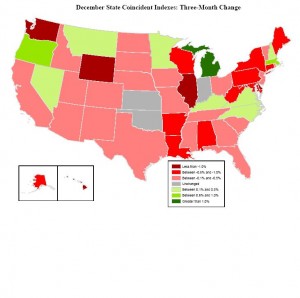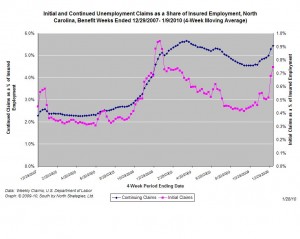Policy Points
29.01.2010
Policy Points
A round-up of policy reports from the week ending on 1/29:
29.01.2010
Policy Points
Labor markets across North Carolina performed poorly in December. Last month, 73 counties posted double-digit unemployment rates, and 45 counties recorded unemployment rates of at least 12 percent.
Every part of the state experienced weak labor markets in December. Unemployment rates exceeded 10 percent in 73 counties, and in 45 counties, at least 12 percent of the labor force was jobless and actively seeking work. County unemployment rates ranged from 6.2 percent in Orange County to 17.6 percent in Graham County.
Unemployment also rose last month in all 14 of the state’s metropolitan areas. Seven metros posted double-digit unemployment rates. The Hickory-Morganton-Lenoir area had the highest unemployment rate (14.8 percent) followed by Rocky Mount (13.9 percent). The lowest metro unemployment rate was 7.7 percent in Durham-Chapel Hill.
Click here to read South by North Strategies’ full analysis of the December employment report.
29.01.2010
Policy Points
Economic conditions remained weak across much of the nation in December, according to the newest State Coincident Indexes Report prepared by the Federal Reserve Bank of Philadelphia.
In December coincident indexes moved in a negative direction in 40 states and in a positive direction in three states (NV, OK, and OR). No changes occurred in seven states (CA, ID, KY, MI, TX, UT, and VA).
 The map to the right, which is taken from the Reserve Bank’s survey, shows the three-month changes in coincident indicators by state. Positive numbers denote improvements in economic conditions, and negative numbers refer to declines.
The map to the right, which is taken from the Reserve Bank’s survey, shows the three-month changes in coincident indicators by state. Positive numbers denote improvements in economic conditions, and negative numbers refer to declines.
Over the last three months, coincident indexes decreased in 37 states, rose in 10 states and held steady in three states.
During the same three-month period, North Carolina’s coincident index moved in a slightly positive direction, suggesting that economic conditions improved somewhat.
28.01.2010
Policy Points
Economic policy reports, blog postings, and media stories of interest:
28.01.2010
Policy Points
For the benefit week ending on January 9th, 26,063 North Carolinians filed initial claims for state unemployment insurance benefits, and 213,009 individuals applied for state-funded continuing benefits. Compared to the prior week, there were fewer initial and continuing claims. These figures come from data released today by the U.S. Department of Labor.
Averaging new and continuing claims over a four-week period — a process that helps adjust for seasonal fluctuations and better illustrates trends — shows that an average of 29,198 initial claims were filed over the last four weeks, along with an average of 213,188 claims. Compared to the previous four-week period, both initial and continuing claims were higher.

One year ago, the four-week average for initial claims stood at 37,512 and the four-week average of continuing claims equaled 195,039.
The graph (right) shows the changes in unemployment insurance claims (as a share of covered employment) in North Carolina since the recession’s start in December 2007.
Although new and continuing claims appear to have peaked for this business cycle, the claims levels remain elevated and point to a labor market that remains extremely weak. Especially troubling is the high level of continuing claims, which suggests that unemployed individuals are finding it extremely difficult to find new positions.



 Email Sign-Up
Email Sign-Up RSS Feed
RSS Feed